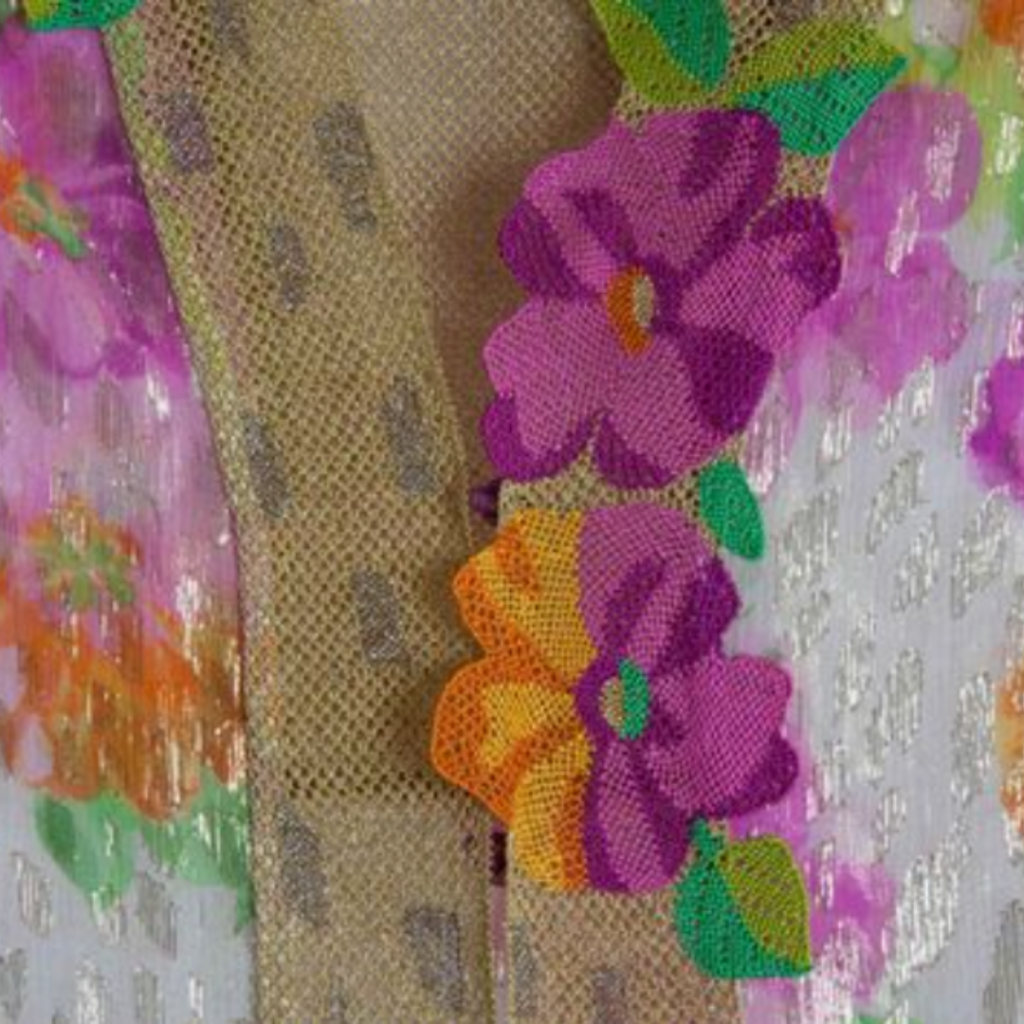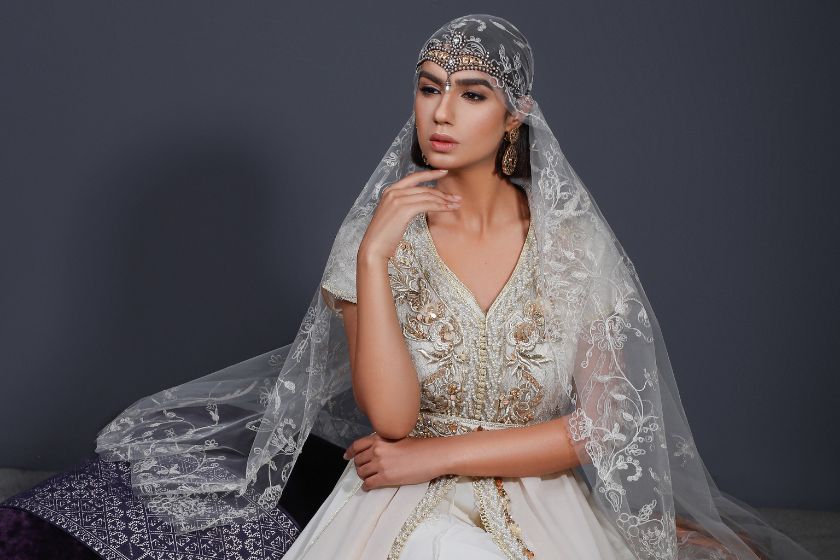Has the time come to choose your wedding caftan? Before heading to the couturier, brush up on the basics and enrich your vocabulary with these five definitions. At the very least, it will impress your mother during fittings (and maybe your mother-in-law as well).
When it comes to a Moroccan wedding, getting a caftan is a given–no surprises there. Or rather, caftans in the plural. Because it’s not just one, but a minimum of four outfits that will enhance your day (or rather, week) J. Caftan of the hammam, caftan of the henna (the famous green one), caftans of the Ars, etc…Remember, we told you the trends of the year 2023 not too long ago. But if you’re embarking on the search for your four obligatory outfits, you’re most likely going to enlist the services of a wedding caftan designer. While being in style is good, getting something custom-made and to your taste is better. Do you already know the basic terminology, such as sfifa (trim), akads (small buttons), or mdamma (belt)? Shoelifer proposes to improve your vocabulary with these 5 terms that will help you make the best choices.–and so that you don’t feel like the couturier is speaking to you in Chinese.
C IS FOR CHEBKA
The creation of a caftan is a complete art and requires traditional expertise. Like “chebka”, this long and meticulous work involves creating lace using skalli and silk thread, with the help of a needle. The lace piece will then adorn the ends of the garment. If you want the sleeves of your wedding caftan to be adorned with this delicate ornament, start early. It takes several months for the embroiderers to create the chebka.

D IS FOR DARS
The little sister of chebka, this Turkish lace is also worked with a needle. How can you recognize it? By its triangular patterns that are reminiscent of small teeth (hence its name). It is also placed at the ends of the garment to extend the sleeve.
Read also : MAKEUP ET COIFFURE DE MARIAGE : QUEL LOOK ADOPTER EN 2023 ?
J IS FOR JOHARA
This is a type of fabric that comes from the Lyon workshops and is then worked in successive strips, sometimes solid, sometimes adorned with floral motifs. It is frequently used under the labssa fassia of the bride.
K IS FOR KITANE
This famous trim is made of spun silk or skalli threads and adorns the wedding caftan. This thin strip is often doubled or tripled to widen its surface area.
Read also : MARIAGE : 6 BIJOUX 2023 À SE FAIRE OFFRIR LE JOUR J
N IS FOR NTAA
This is a type of thread embroidery that comes from Fes. Particularly intricate, it is often done on velvet by the maâlems. You often find embroidered peacocks at the bottom of the characteristic caftan outfit.
Photo (c) : Shoelifer


